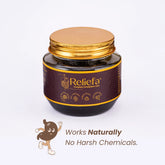Anemia
Anemia in Ayurveda - Understanding 'पांडुरोग'
Modern vs. Ayurvedic Approach to Anemia
In modern medicine, anemia is defined as a reduction in red blood cell count or hemoglobin concentration, leading to decreased oxygen-carrying capacity of the blood. It can result from nutritional deficiencies (especially iron, vitamin B12, or folate), chronic diseases, blood loss, or bone marrow disorders. Symptoms include fatigue, pallor, dizziness, and shortness of breath. Diagnosis is confirmed through blood investigations like hemoglobin estimation, peripheral smear, and serum ferritin levels. Conventional treatment involves iron and vitamin supplementation, dietary correction, or transfusions in severe cases.
However, modern care often focuses on symptom management, while Ayurveda emphasizes root-cause correction and rejuvenation.
Ayurvedic Viewpoint of Anemia
In Ayurveda, anaemia is described as "Pandu Roga", derived from the word Pandu, meaning pale or whitish discolouration of the skin. According to Ayurveda, anaemia arises from impaired Agni, which hampers the conversion of food into nutritious plasma (Rasa dhatu). This poorly formed Rasa fails to nourish Rakta dhatu (blood tissue), leading to deficient or impure blood.
Dosha-specific features include:
Pitta-dominant anaemia
→ yellowish discolouration, burning sensation, dizziness.
Vata-dominant anaemia
→ palpitations, dryness, weight loss, anxiety.
Kapha-dominant anaemia
→ lethargy, heaviness, swelling, drowsiness.
Common Causes (Nidana) of Anemia
- Poor digestive strength leading to malabsorption
- Heavy menstrual bleeding, haemorrhoids, ulcers, or chronic blood loss
- Inadequate intake of iron-rich and nutritious foods
- Excessive intake of sour, salty, or pungent food items
- Worm infestation and long-term illnesses
- Overexertion, stress, and irregular lifestyle
Symptoms and Presentation
- Generalised weakness and easy fatigue
- Pale skin, lips, nails, and conjunctiva
- Shortness of breath and palpitations
- Loss of appetite and indigestion
- Swelling of the feet in chronic cases
- Dizziness and reduced concentration
Complications if Ignored
If anaemia remains untreated, it can lead to:
- Severe fatigue and poor immunity
- Oedema and swelling in the body
- Breathlessness and palpitations
- Growth retardation in children
- Compromised pregnancy outcomes in women
- Risk of chronic disorders due to depleted tissues
Ayurvedic Treatment for Anemia
Ayurveda focuses on enhancing digestion, enriching blood, and balancing doshas.
Shodhana with Panchkarma (Cleansing & Detoxification)
- Mild purgation (Virechana) in Pitta-dominant anaemia.
- Abhyanga (medicated oil massage) for strength.
- Swedana (steam therapy) for heaviness.
- Basti (medicated enema) in Vata-dominant anaemia.
Shamana Therapies (Pacification & Supportive Care through medicines)
Raktavardhaka (blood enhancer) and Pittashamaka medicines in Ayurveda along with medicines that help in curing Ama accumulation in the liver and spleen, restoring healthy blood formation.
Dietary Guidelines
- Include iron-rich foods: green leafy vegetables, jaggery, dates, raisins, pomegranate, and beetroot.
- Consume Vitamin C-rich fruits like amla, oranges, and lemon to enhance absorption.
- Prefer freshly cooked, warm, and light meals.
- Avoid excessive tea, coffee, fried and junk foods, which block nutrient absorption.
Lifestyle Guidelines
- Maintain regular eating and sleeping habits.
- Avoid overexertion and excessive mental stress.
- Practice Pranayama like Anulom Vilom, Bhastrika, for improved oxygenation.
- Rest adequately and follow a balanced daily routine (Dinacharya).
Home Remedies in Ayurveda
Amla Remedy
Take 1 tsp of Amla juice/fruit/Murabba (after removing sugar) daily.
Pomegranate Boost
Consume pomegranate or its juice with a pinch of black pepper.
Sesame & Jaggery
Mix ¼ tsp of black sesame seeds with jaggery and eat daily.
Iron Water
Drink water stored in an iron vessel for natural iron supplementation.
Key Benefits of Ayurvedic Treatment for Anaemia
- Improves digestion and nutrient absorption naturally.
- Corrects root causes like chronic bleeding or poor Agni.
- Enhances haemoglobin levels without side effects.
- Strengthens overall immunity and energy levels.
- Provides holistic care by balancing mind and body.
Conclusion
Anemia (Pandu Roga) is not just a nutritional deficiency but a systemic imbalance as per Ayurveda. Correcting Agni, nourishing Rakta dhatu, and balancing doshas are the pillars of Ayurvedic treatment. With proper herbs, Panchakarma, diet, and lifestyle, Ayurveda provides a safe, natural, and long-term solution for anaemia.
FAQs on Anaemia
Yes. By addressing digestion, diet, and blood nourishment, Ayurveda provides long-term relief without side effects.
Mild cases may improve in 4–6 weeks, while chronic conditions may require 2–3 months.
Yes. Ayurveda not only controls excessive bleeding but also replenishes blood and restores strength.
Yes. Unlike modern iron tablets, Ayurvedic preparations are well-absorbed and do not cause constipation or gastric upset.
No. It may also arise from poor digestion, chronic illness, vitamin deficiencies, or blood loss.
BOOK YOUR CONSULTATION NOW
Discover the holistic Ayurvedic approach to treating anemia and restoring your vitality.
Start Your Healing JourneyAas Ayurveda – Revitalizing Your Body, Mind, and Spirit



